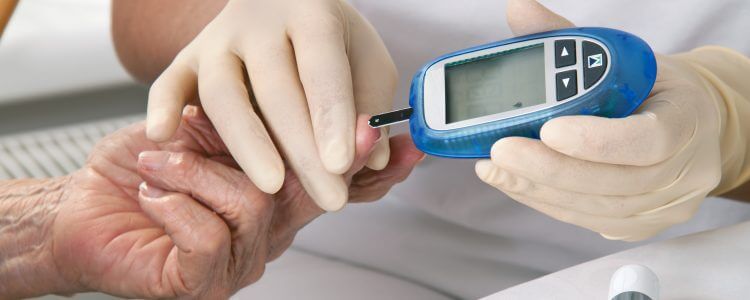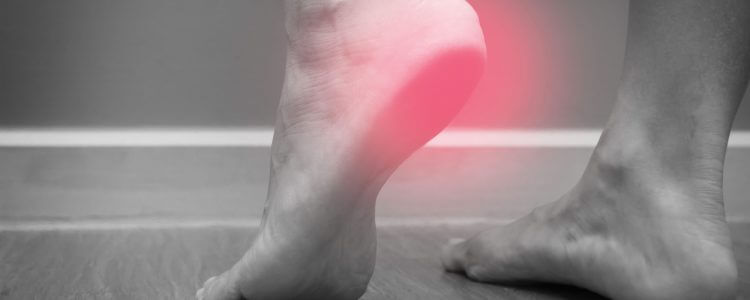
Diabetic Neuropathy – Its Cause and Symptoms
July 16, 2019
Calcaneal Spurs – What Are They?
September 19, 2019Piriformis Syndrome – What Is It?
What is Piriformis Syndrome?
The Piriformis Syndrome is a neuromuscular disorder that occurs when the piriformis muscle compresses the sciatic nerve and causes abnormal symptoms in the area. When sudden spasm occurs, it causes discomfort such as numbness and pain to the buttocks area or sciatic nerve.
In definition, the piriformis muscle is a small, flat, band-like muscle located deep in the buttock area. The muscle starts at the lower part of the spine and connects to the upper part of each thighbone.
Piriformis muscle is essential to the lower body part movement because it supports the hip joint. It lifts and rotates thighs away from the body, which allows a person to walk or shift weight from one foot to the other, and at the same time, being able to maintain balance.
On the other hand, the sciatic nerve is long, thick, and a major nerve in the body, which extends from the lower end of the spinal cord and goes through the piriformis muscle. It goes down behind the leg’s back, and branches off into smaller nerves that end in the feet.
What causes Piriformis Syndrome?
In an anatomical position, the piriformis muscle serves as not only the thigh at the hip joint’s lateral (external) rotator but also the pelvis at the hip joint’s contralateral rotator. However, if the leg is flexed to around 60 degrees and above, the piriformis muscle switches from being the thigh’s lateral rotator into a medial (internal) rotator.
The piriformis muscle meets the sacroiliac joint, which acts as its stabilizer. Since piriformis syndrome happens when piriformis muscle tightens, any movement or posture that requires piriformis contraction increases the muscle’s baseline tone and contributes to the discomfort or pain when piriformis syndrome occurs.
One of the primary causes of piriformis muscle tightening is when it contracts to normalize a painful or dysfunctional sacroiliac joint. Dysfunctional sacroiliac joint conditions may include hypomobility, hypermobility, macro trauma, recurred microtrauma which causes irritation or inflammation to the concerned join, or sprain.
The most common cause of the piriformis muscle’s tightening would be likely to be either pain or hypermobility if the patient has a chronic posture of lateral thigh rotation, which leads to shortening or hardening of the piriformis muscle.
Piriformis muscle tightening may happen when patients drive their vehicles with the foot on the gas pedal, but the heel is placed on the front of the break. Another cause of piriformis syndrome is a patient’s repeated pattern of crossing their legs, where ankles are on the other side of the knee.
What are the signs or symptoms of Piriformis Syndrome?
- Pain
- Tingling
- Pain that may go from the back part of the body to the foot
- Recurring pain
- Severe pain when attempting to do specific movements that require the use of legs (a few examples of which are climbing stairs, running, walking, bending)
Who can treat Piriformis Syndrome?
Doctors or other healthcare professionals who may help treat or address piriformis syndrome include physical therapists occupational therapists, orthopedists, osteopathic physicians, physical therapists, sports medicine doctors and chiropractors.
What are the risk factors concerning Piriformis Syndrome?
For patients involved in sports activities, injuries may include the following:
- Inflammation (due to overuse or sprain)
- Trauma (blunt buttock trauma)
- Hematoma
- Scar formation
And those who develop the above mentioned near the piriformis muscles may also be at risk of the following:
- Cysts
- Pseudo-aneurysms
- Tumors
What tests do healthcare professionals often diagnose those with piriformis syndrome?
While there are no definitive tests for this neuromuscular disorder, doctors may ask the patient during a physical examination if they experience pain or palpitation when moving the concerned body part in specific directions.
Since piriformis syndrome usually causes sciatica and lower back pain, healthcare professionals perform tests to eliminate other causes of sciatic nerve compression like back sprains, herniated discs, lumbosacral spondylolisthesis, spinal stenosis, and many more.
X-rays may rule out any bone fracture, while CT Scans, MRI (Magnetic Resonance Imaging), Electromyography (EMG), Neurography or Electrophysiologic tests, or injecting on the piriformis muscle’s trigger points with anesthetics like lidocaine, may help the physician on-charge determine if the symptoms present is caused by piriformis syndrome or other health concerns like herniated disc and others.
Is it possible to avoid Piriformis Syndrome?
Preventing piriformis syndrome is possible if an individual avoids overuse or trauma to the lower back or gluteal muscles. With proper flexibility training, exercise, and proper stretching, the recurrence of piriformis syndrome may also be avoided if the concerned individual commits to such a lifestyle.
Sources:
https://www.webmd.com/pain-management/guide/piriformis-syndrome-causes-symptoms-treatments#1
https://learnmuscles.com/blog/2017/08/04/piriformis-syndrome-causes/
https://www.medicinenet.com/piriformis_syndrome/article.htm#


